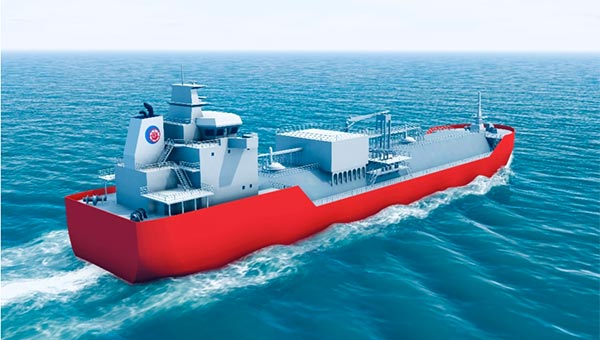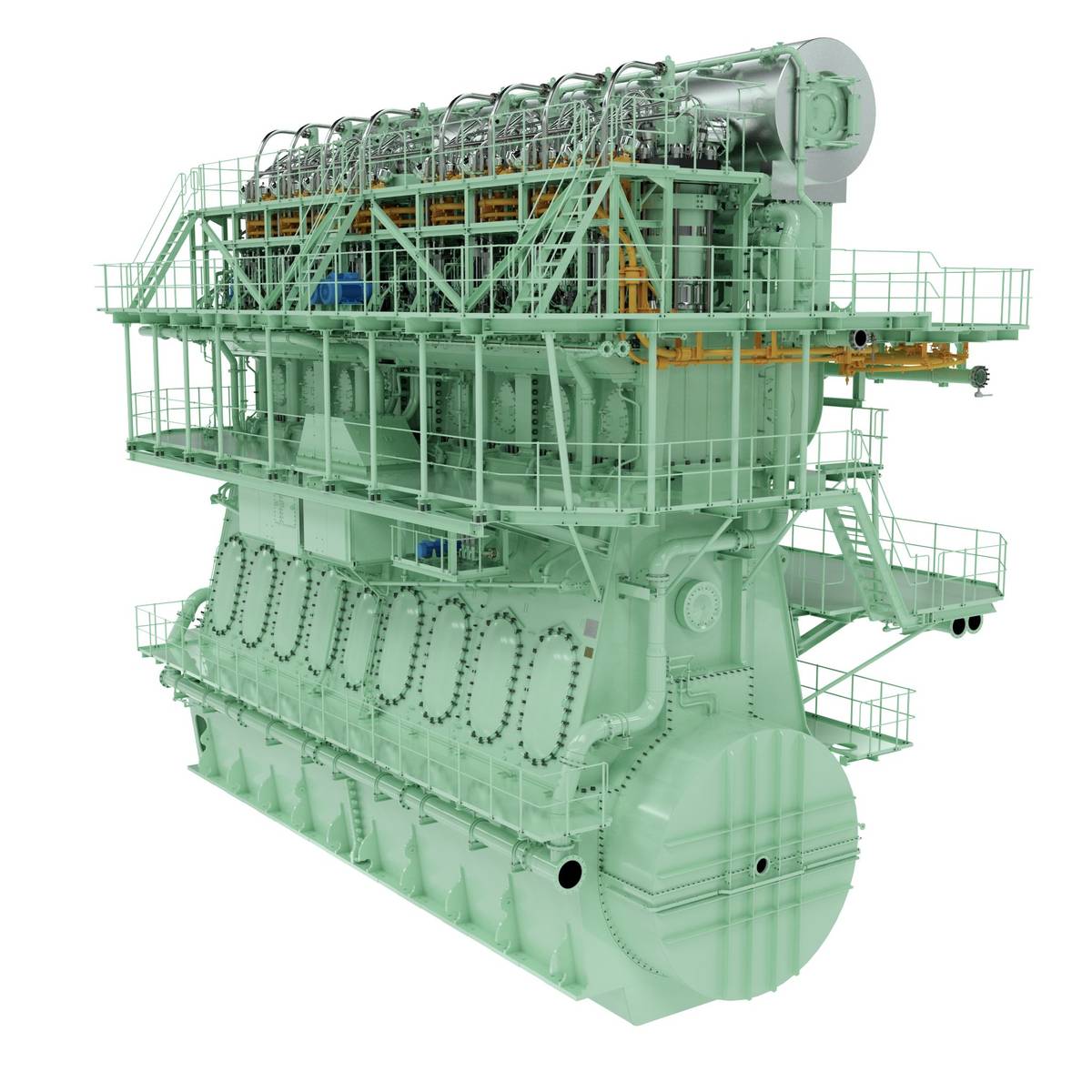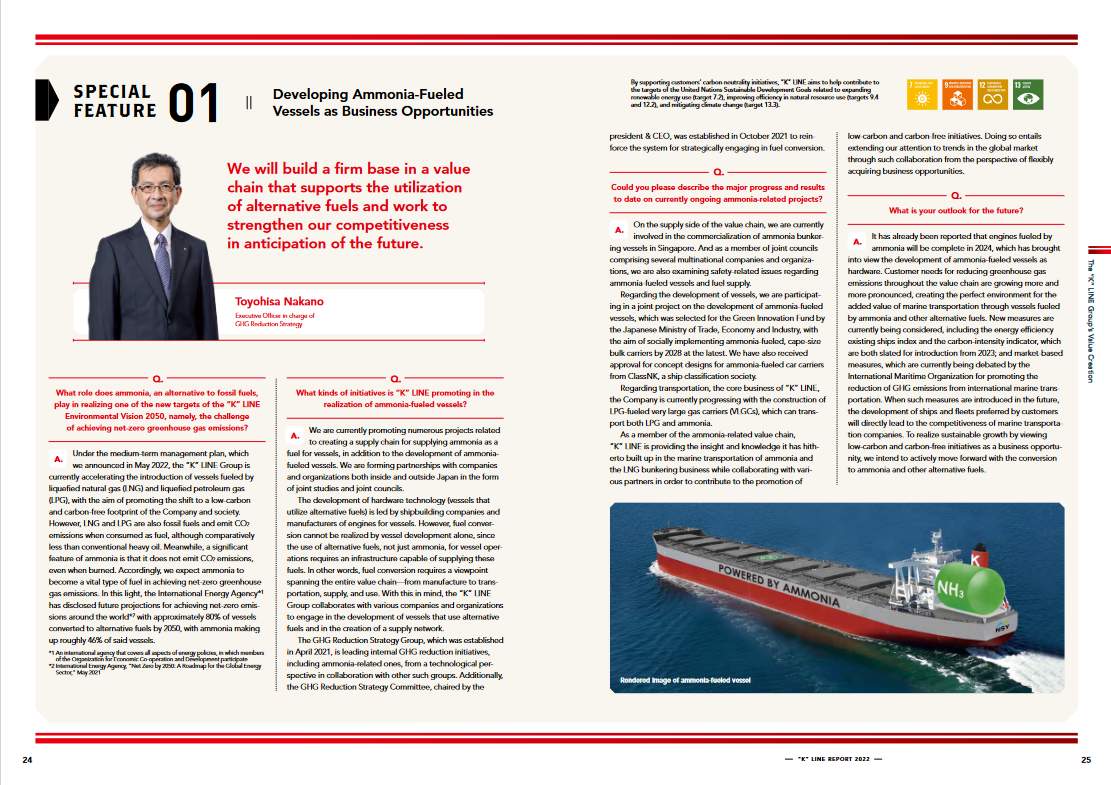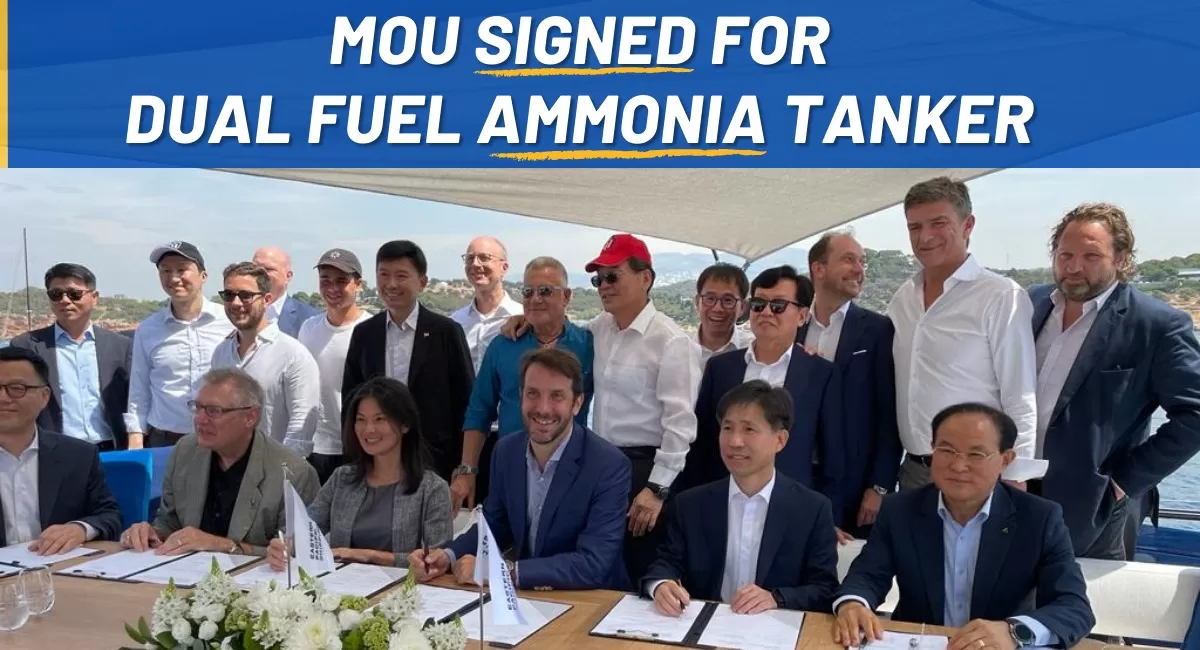Eastern Pacific Shipping’s on-order very large ammonia carriers (VLACs) will be registered in Singapore, thanks to a new partnership with the Maritime and Port Authority. Trafigura has announced the first of its ammonia-fueled, medium gas carriers will be delivered from South Korea in 2027. In Japan, K LINE and MAN are leading a 5-party collaboration to develop ammonia fueled-engines and deploy them in 200,000 dwt bulk carriers. We also explore ammonia-fueled Aframaxes in Malaysia, a concept study for a large-volume, coastal ammonia carrier in Japan, and a new salmon fishing vessel design in Norway.
Content Related to Kawasaki Kisen Kaisha (K Line)
Article
Marine ammonia engines: working towards deployment in Japan
Julian Atchison May 07, 2024
MAN Energy Solutions has announced one of the first deployments of its ammonia two-stroke engine will take place in Japan. Mitsui E&S will construct the MAN B&W 7S60ME dual-fuel engine, with Imabari Shipbuilding to then install it aboard a Newcastlemax bulk carrier, along with an integrated SCR catalytic converter to treat engine NOX emissions. The news underscores significant momentum for the deployment of marine ammonia engines, with Wärtsilä, WinGD and Mitsubishi Shipbuilding also engaged in ongoing projects.
Article
Maritime ammonia developments in South Korea, Japan
Julian Atchison December 19, 2022
In this week’s maritime ammonia news:
- Hyundai Heavy Industries, Lloyd’s Register and Korea National Oil Corporation have signed a new agreement to jointly develop an ammonia floating storage and regasification unit, or FSRU.
- KSS Line and Samsung C&T will cooperate to establish a clean hydrogen/ammonia transportation service, powered by alternative fuels.
- In Japan, K Line has announced ammonia will underpin its decarbonisation strategy to 2050, with AiP granted for a new Newcastlemax bulk carrier design.
- And the first of two CCU ammonia shipments have reached Ulsan from Saudi Arabia, with importer Lotte Fine Chemical leading development of a clean ammonia supply chain in the Yellow Sea.
Article
First Approval in Principle for Project Sabre in Singapore
Julian Atchison July 07, 2022
ABS has granted Approval in Principle to Keppel Offshore & Marine for an ammonia-fueled, ammonia bunkering vessel. The new vessel is a key component of Project Sabre: a high-profile consortium of maritime organisations aiming to commence ammonia bunkering in Singapore by 2030.
Article
Eastern Pacific Shipping: adding ammonia power to the fleet
Julian Atchison June 17, 2022
Eastern Pacific Shipping will lead development of an ammonia-powered, dual-fuel gas tanker. The carrier will be built by Hyundai Heavy Industries, registered under the Singapore national flag, classed by ABS, and will be the first vessel fitted with MAN Energy Solutions’ G60 two-stroke dual-fuel ammonia engine. As EPS steadily scales up its engagement with maritime ammonia, another high-profile consortium is accelerating a bunkering study in Singapore.
Article
Kawasaki Heavy's LPG/ammonia carrier in demand
Julian Atchison December 08, 2021
Kawasaki Heavy Industry's 86,700 m3, LPG and "liquefied ammonia gas" (LAG) carrier has been ordered for the fifth time in 2021. K Line, Eneos (two vessels) and now NYK (also two vessels) will take delivery of the VLGCs from KHI's Sakaide shipyards in 2023 (K Line and Eneos), and 2024 (NYK). The flexibility of the dual-purpose LPG/ammonia carrier is key to its newfound popularity.
Article
Ammonia energy is now a talking point for CEOs
Trevor Brown January 09, 2020
Chief executives of major corporations are now talking about ammonia energy. This represents another crucial step up the learning curve for clean industry: knowledge about ammonia's potential has successfully spread from the R&D department to the executive suite. This is the difference between development and deployment. The fertilizer industry saw this in 2018, when the CEOs of first movers like Yara and OCP announced green ammonia pilot plants. These latest announcements come, however, from the shipping and power sectors — far bigger industries, with no existing ammonia business — and they focus on the use of green ammonia: for fuel and for profit.






